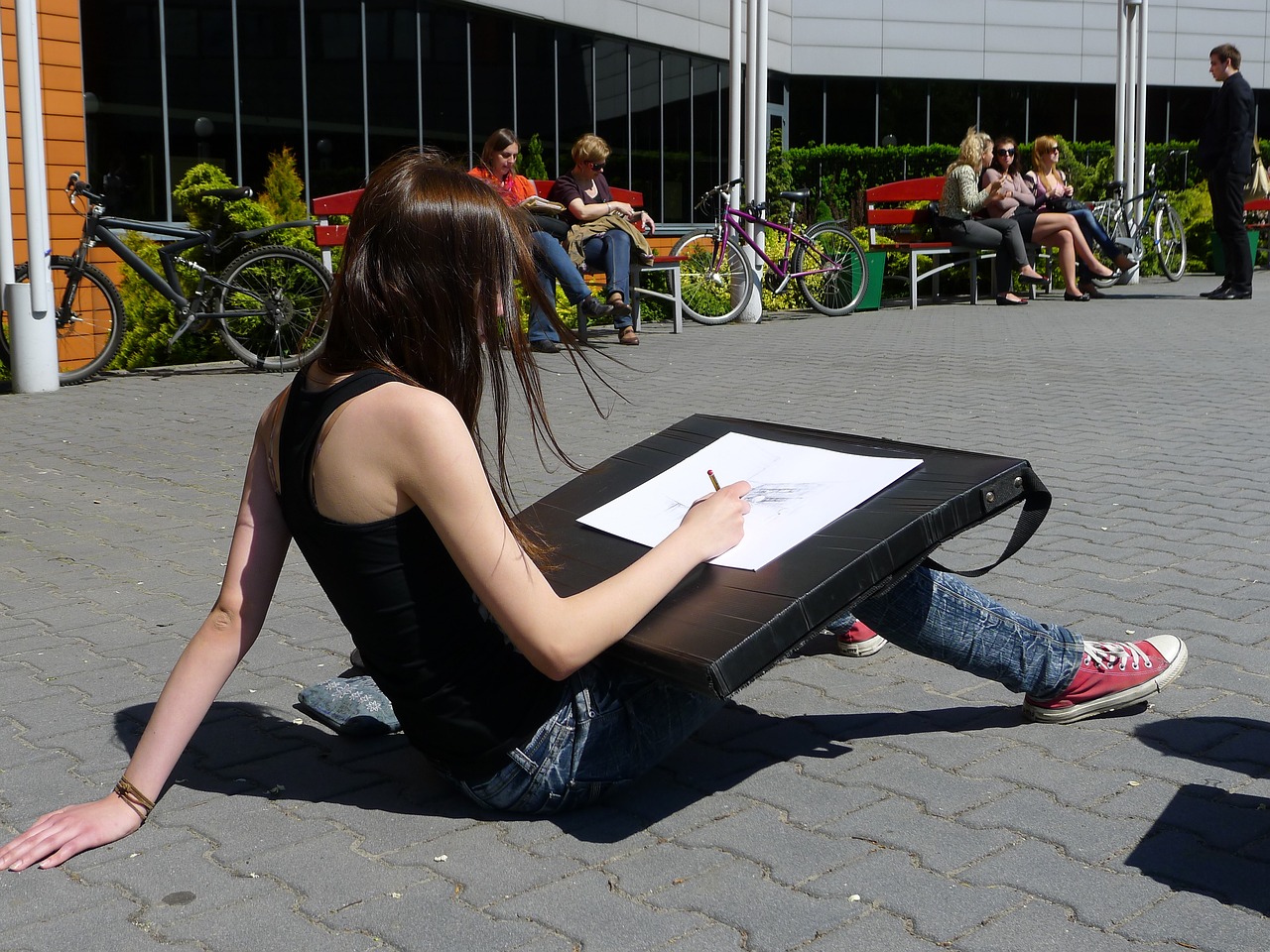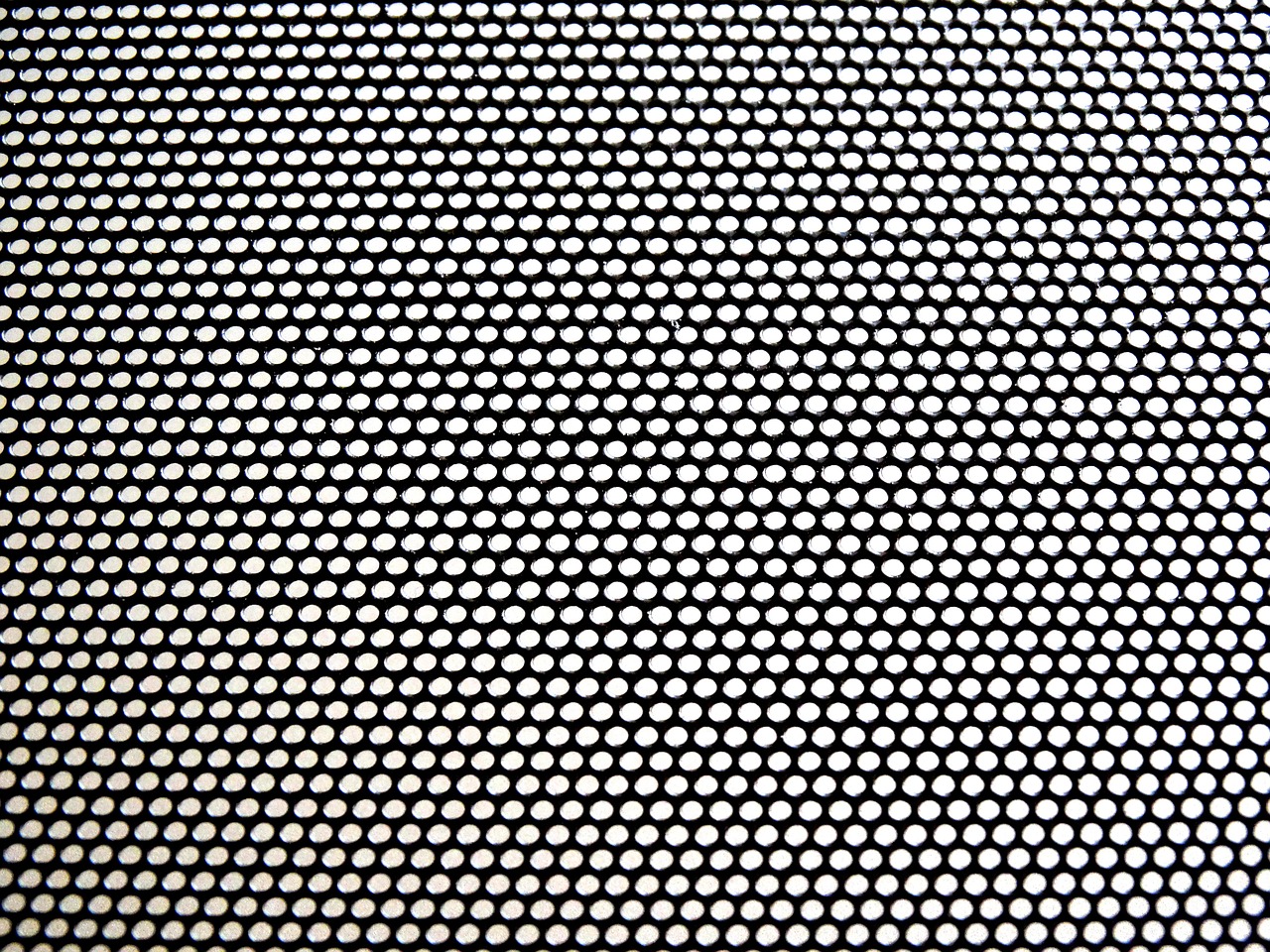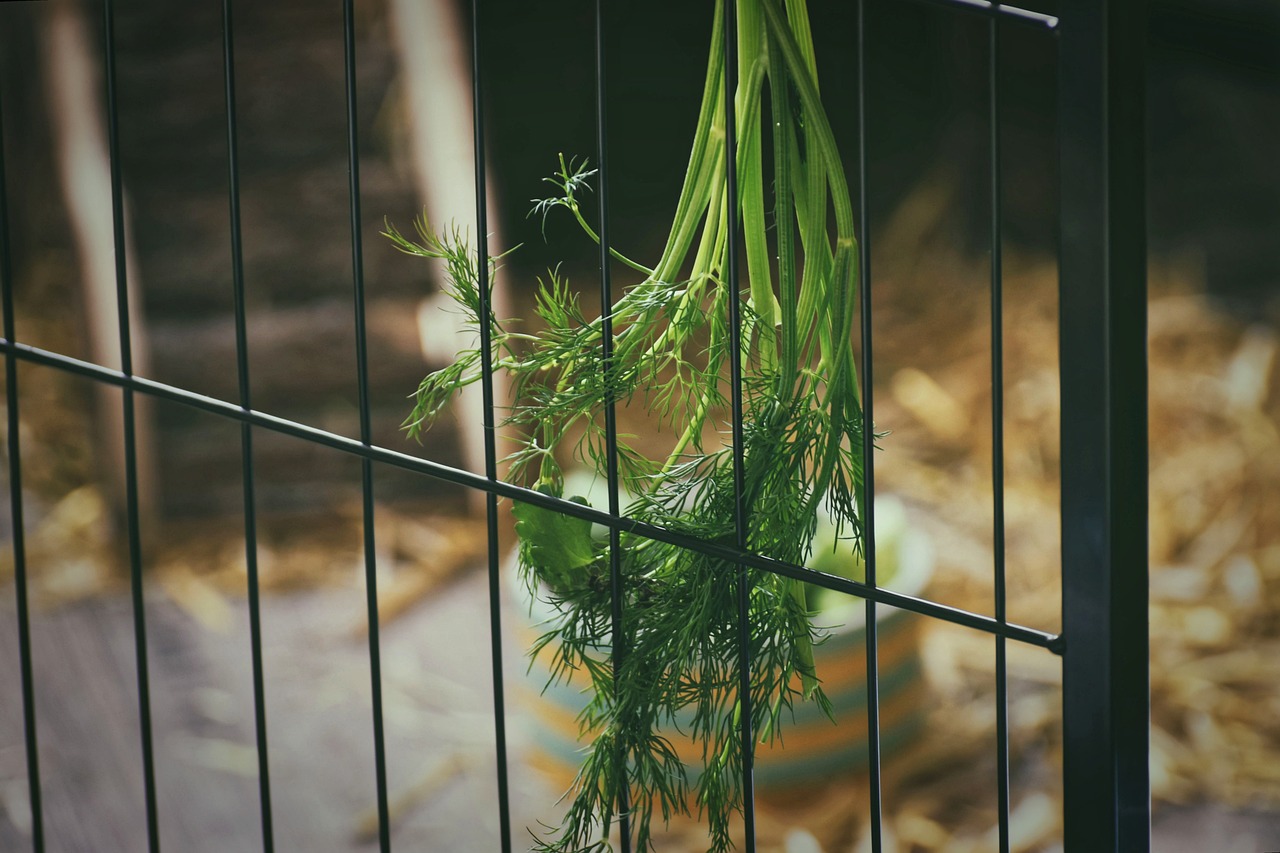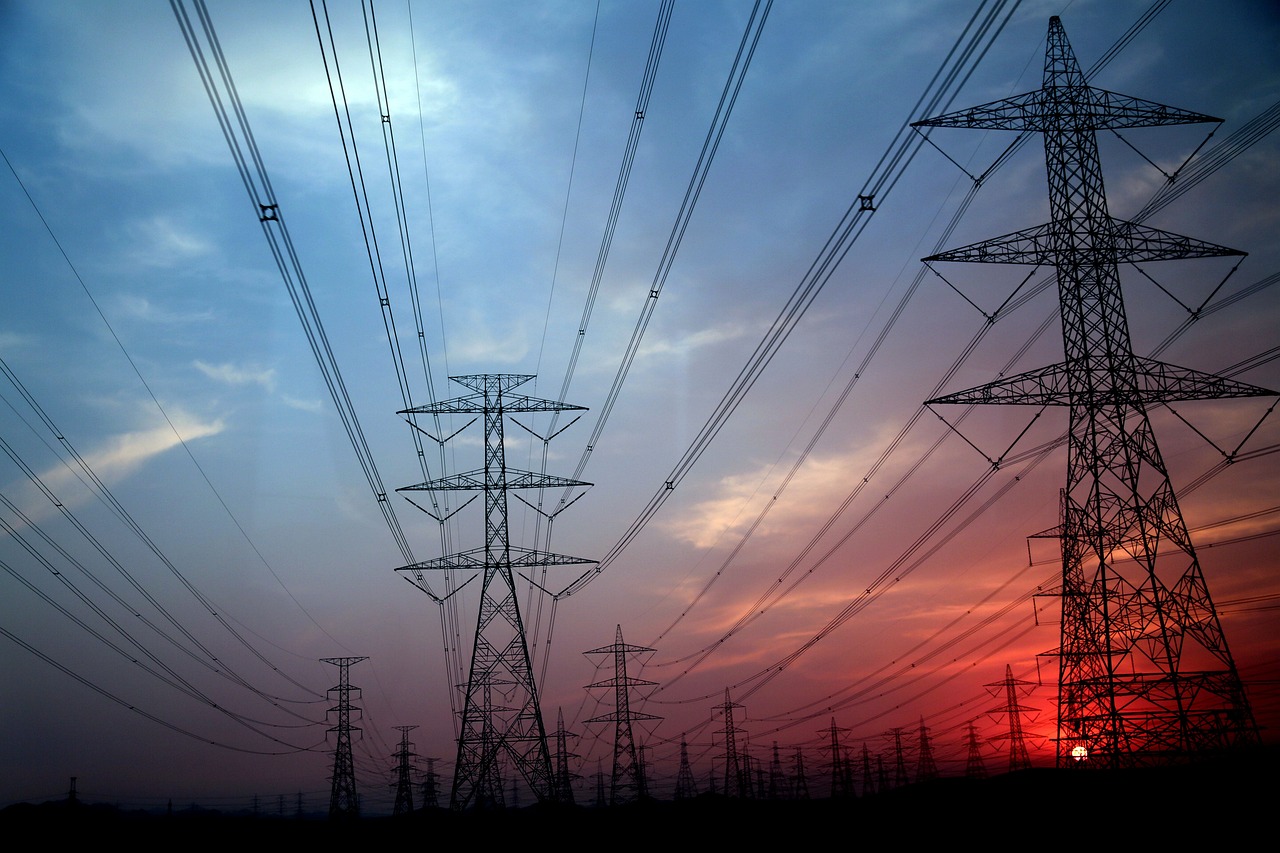Using a Grid System for Realistic Drawing
Have you ever stared at a blank canvas, feeling overwhelmed by the prospect of capturing the intricate details of your subject? If so, you're not alone! Many artists, whether beginners or seasoned professionals, often struggle with achieving the right proportions and realism in their drawings. This is where the grid system comes into play—a transformative technique that can elevate your artwork to new heights. By breaking down complex images into manageable sections, grids help maintain accuracy and enhance the overall quality of your drawings. In this article, we will explore the significance of the grid system, provide practical techniques for its implementation, and share tips to help you avoid common pitfalls. Ready to unlock your artistic potential? Let’s dive in!
Understanding the foundational principles of the grid system is essential for any artist looking to improve their drawing skills. At its core, a grid is a series of intersecting horizontal and vertical lines that create a framework for your artwork. This method allows you to focus on smaller sections of your reference image, ensuring that proportions are maintained and details are accurately represented. Think of it as a roadmap; just as a map helps you navigate a new city, a grid helps guide your hand as you translate what you see onto paper. By using a grid, you can break down the drawing process into smaller, less intimidating tasks, making it easier to achieve the desired level of realism.
Now that we understand the importance of a grid, let’s talk about how to set one up effectively. The first step is to measure and mark your grid on both your reference image and your drawing surface. Here’s a simple step-by-step guide to get you started:
- Choose your reference image and decide on the size of your drawing.
- Determine the number of squares you want in your grid. Common choices are 1-inch squares or 2-inch squares, depending on the level of detail you wish to achieve.
- Using a ruler, lightly draw the grid lines over your reference image, ensuring they are evenly spaced.
- Repeat the process on your drawing surface, marking the same grid size.
By following these steps, you’ll create a clear framework that will guide your drawing process.
Selecting an appropriate grid size is crucial for achieving the desired level of detail in your artwork. A smaller grid can help you capture intricate details, while a larger grid simplifies the drawing process for less complex compositions. To determine the best grid scale for your specific project, consider the following:
- Subject Complexity: For highly detailed subjects, opt for a smaller grid to ensure accuracy.
- Drawing Size: Larger drawings may benefit from a larger grid to avoid overwhelming details.
Employing a smaller grid can significantly enhance the detail in your artwork. This is particularly useful when working on subjects that require precision, such as portraits or intricate still lifes. A finer grid allows you to focus on smaller sections, making it easier to replicate complex shapes and textures. Imagine trying to solve a puzzle—working on one piece at a time is much more manageable than trying to tackle the entire picture at once!
On the flip side, using a larger grid can simplify the drawing process, especially for less complex compositions. This approach allows you to capture the overall shape and proportions without getting bogged down in minute details. It’s like looking at a beautiful landscape; sometimes, it’s more about capturing the essence rather than every single leaf on a tree. A broader grid can help you achieve that balance.
Once your grid is set up, the next step is accurately transferring it from your reference image to your drawing surface. This ensures that proportions and alignment remain consistent. To do this, focus on one square at a time. Look at the content within each square on your reference image and replicate it in the corresponding square on your drawing. This method not only keeps your drawing organized but also helps you avoid common mistakes that can arise from trying to capture the entire image at once.
Identifying and avoiding common pitfalls can significantly improve your grid drawing experience. Here are some typical errors artists make and how to steer clear of them:
While grids are incredibly helpful, it’s essential not to become overly reliant on them. Over-reliance can hinder your artistic intuition and freehand skills. Remember, the grid is a tool, not a crutch! Find a balance between using grids for accuracy and allowing your creativity to flow.
Another common mistake is ignoring perspective and depth. Grids can sometimes oversimplify these elements, leading to flat and uninteresting drawings. To create a more realistic outcome, incorporate these aspects into your grid-based drawings. Think of perspective as the stage on which your subject performs—without it, the scene can feel lifeless.
Regular practice is vital for mastering the grid system. The more you work with grids, the more intuitive the process will become. Consider setting aside time each week to practice different techniques or tackle new projects using grids. You might even challenge yourself to draw a subject using both a small and large grid to see how each affects your final outcome. Remember, every artist was once a beginner, and the journey to improvement is paved with practice!
Q: Can I use a grid for any type of drawing?
A: Absolutely! Grids can be beneficial for various styles, including realistic, abstract, and even cartoon drawings. The key is to adapt the grid method to suit your artistic goals.
Q: Do I have to draw the grid on my reference image?
A: No, you can also use a digital grid overlay if you’re working from a digital image. There are various applications available that allow you to do this easily.
Q: How do I know when to stop relying on the grid?
A: As you become more comfortable with the grid system, you’ll start to develop your freehand skills. Trust your instincts—if you feel confident enough, try drawing without the grid occasionally to challenge yourself!

The Basics of the Grid System
Understanding the foundational principles of the grid system is essential for artists who aspire to enhance their drawing accuracy and realism. At its core, the grid system acts as a framework that helps maintain proportions and improves overall drawing precision. Imagine trying to build a house without a blueprint; it would be chaotic, right? The same goes for drawing. A grid provides a structured approach that allows you to break down complex images into manageable sections.
When you use a grid, you're effectively transforming a large image into smaller, more digestible parts. This technique allows you to focus on one section at a time, ensuring that every detail is captured accurately. For instance, if you're drawing a portrait, you can concentrate on the eyes in one square, then move to the nose in another, and so forth. This method not only enhances your attention to detail but also helps in maintaining the correct proportions throughout the entire drawing.
One of the biggest advantages of using a grid is that it minimizes the risk of distortion. Without a grid, it's easy to misjudge the size and position of elements, leading to a final piece that feels unbalanced or skewed. By overlaying a grid on your reference image, you can easily compare the shapes and sizes of different elements, ensuring they correspond accurately in your drawing. Think of it as a map that guides you through the intricate landscape of your artwork.
To illustrate this point further, consider the following table that outlines some key benefits of using a grid system:
| Benefit | Description |
|---|---|
| Improved Accuracy | Helps maintain correct proportions and placements of elements. |
| Enhanced Focus | Allows you to concentrate on one section at a time. |
| Reduced Distortion | Minimizes the chances of misjudging sizes and positions. |
| Structured Approach | Provides a clear roadmap for complex images. |
In summary, the grid system is an invaluable tool for artists seeking to elevate their drawing skills. It not only aids in achieving a higher level of precision but also fosters a deeper understanding of the relationships between different elements within an artwork. As you become more familiar with this technique, you'll find that it opens up a world of possibilities for your artistic expression.

Setting Up Your Grid
Setting up your grid is a crucial step in the drawing process that can significantly enhance your accuracy and realism. First, you'll want to choose your reference image carefully. This image will be the basis for your drawing, so pick something that inspires you and has clear, defined shapes. Once you have your reference image, it’s time to create your grid. You can do this on paper or digitally, depending on your preference. The goal here is to break down your reference into manageable sections.
To begin, measure the dimensions of your reference image. Use a ruler to draw straight lines across the image, both vertically and horizontally, creating a grid. The size of each square in your grid will depend on the level of detail you wish to achieve. For example, if you're working on a portrait with intricate features, smaller squares will allow for greater precision. On the other hand, if you’re sketching a landscape, larger squares might suffice. Here’s a quick overview of how to measure and mark your grid:
| Step | Description |
|---|---|
| 1 | Measure the width and height of your reference image. |
| 2 | Decide on the number of squares you want in each direction. |
| 3 | Divide the width and height by the number of squares to find the size of each square. |
| 4 | Draw the grid on your reference image using a light pencil or digital tool. |
Now, let’s talk about transferring that grid to your drawing surface. You’ll want to ensure that your drawing surface has the same proportions as your reference image. This means if your reference is a 4x4 grid, your drawing should also be a 4x4 grid. Use a ruler to lightly mark the corresponding points on your drawing surface, ensuring that each square aligns with the squares on your reference. This step is vital for maintaining proportion and perspective in your artwork.
Remember, the purpose of the grid is to guide you, not to constrain your creativity. As you transfer the details from each grid square, take a moment to observe the shapes and lines within that square. This will help you capture the essence of the reference image without getting overwhelmed by the entire composition. Think of the grid as a roadmap—each square is a stop on your journey to creating a stunning piece of art.
In summary, setting up your grid involves careful measurement, proportion, and alignment. With a little practice, you'll find that this method not only improves your accuracy but also boosts your confidence as an artist. So grab your tools, and let’s get started on this exciting artistic adventure!
- What if I make a mistake while drawing with the grid? - Don't worry! Mistakes are part of the learning process. You can always adjust your lines or even erase and start over in that area.
- Can I use a grid for any type of drawing? - Yes! The grid system can be applied to various styles, from realistic portraits to abstract art.
- How do I know if my grid size is appropriate? - If you're struggling to capture details, consider using a smaller grid. If you're finding it too tedious, a larger grid might be better.

Choosing the Right Grid Size
When it comes to using a grid system for drawing, one of the most crucial decisions an artist must make is . The grid size can significantly impact the level of detail and accuracy in your artwork. Think of it like selecting the right lens for a camera; the choice you make can either enhance your vision or distort it. So, how do you determine the best grid scale for your specific project? Let's break it down.
First, consider the complexity of your subject. If you're working on a highly detailed piece, such as a portrait or an intricate still life, a smaller grid—perhaps 1-inch squares—can be incredibly beneficial. This smaller scale allows you to capture minute details, ensuring that every shadow, highlight, and contour is accurately represented. On the other hand, if your subject is less complex, like a simple landscape or abstract composition, a larger grid—say 2-inch or even 4-inch squares—might be more appropriate. This larger grid can help you focus on the overall composition without getting bogged down in unnecessary details.
Another factor to consider is your drawing experience. If you're a beginner, starting with a larger grid can be less intimidating. It simplifies the drawing process and allows you to build confidence as you learn to translate the shapes and forms from your reference image onto your drawing surface. As you become more comfortable with your skills, you can gradually transition to smaller grids for projects that require more precision.
Moreover, it's essential to think about the medium you are using. Different mediums can behave differently when it comes to detail and precision. For instance, if you're using charcoal or pastels, a larger grid might be more forgiving, allowing for softer edges and blending. In contrast, if you're working with fine ink or pencil, a smaller grid may be necessary to achieve the sharpness and clarity you desire.
To help you visualize this better, here’s a simple comparison table:
| Grid Size | Best For | Level of Detail |
|---|---|---|
| 1-inch squares | Highly detailed subjects (portraits, intricate still life) | High |
| 2-inch squares | Moderately detailed subjects (landscapes, animals) | Medium |
| 4-inch squares | Simple compositions (abstract art, basic shapes) | Low |
Ultimately, the right grid size is about finding a balance between detail and ease. Don't be afraid to experiment with different sizes until you find what works best for you. Remember, the goal is to enhance your drawing experience and improve your skills, not to constrain your creativity. So, whether you opt for a fine or broad grid, embrace the process and enjoy the journey of bringing your artistic vision to life!

Using a Smaller Grid for Detail
When it comes to capturing intricate details in your artwork, using a smaller grid can be a game-changer. Imagine trying to replicate a stunning portrait or a delicate flower; a larger grid might oversimplify those nuances, causing you to miss out on the subtle beauty that makes your subject come alive. By employing a smaller grid, you can achieve a level of precision that truly enhances the realism of your drawing.
So, how do you know when to switch to a smaller grid? The key is in assessing the complexity of your subject. If you're working with a highly detailed reference image, such as a close-up of a person's face or the intricate patterns on a butterfly's wings, a smaller grid can help you break down those tiny elements into manageable sections. This method allows you to focus on one square at a time, ensuring that every detail is captured accurately.
Here are a few benefits of using a smaller grid:
- Enhanced Accuracy: Smaller grids allow for more precise measurements, making it easier to replicate intricate details without distortion.
- Improved Proportions: By concentrating on smaller sections, you can maintain the correct proportions more effectively, reducing the risk of errors.
- Increased Confidence: As you see your detailed work come together square by square, your confidence as an artist will grow, encouraging you to tackle even more complex subjects.
However, it's essential to strike a balance. While a smaller grid can bring out the finer details, it can also be time-consuming. If you find yourself spending too long on one section, step back and assess whether the detail you're focusing on is truly necessary for the overall composition. Sometimes, less is more, and understanding when to simplify can be just as important as knowing when to zoom in.
In conclusion, using a smaller grid for detail can significantly elevate your artwork, especially when dealing with complex subjects. It empowers you to capture the essence of your reference image with remarkable accuracy. Just remember to keep an eye on the bigger picture—after all, art is about more than just precision; it’s about expression and emotion. So, embrace the smaller grid, but don’t forget to let your creativity flow!
Q: How do I choose the right grid size?
A: The right grid size depends on the complexity of your subject. For detailed images, opt for a smaller grid; for simpler compositions, a larger grid works well.
Q: Can I use a grid for freehand drawing?
A: Absolutely! Grids can help you maintain proportions and accuracy even in freehand drawings. Just be sure to gradually wean yourself off the grid as you become more confident.
Q: What if I find the grid distracting?
A: If the grid feels overwhelming, try lightly sketching it in with a pencil. This way, you can easily erase it once your drawing is complete.

Utilizing a Larger Grid for Simplicity
When it comes to drawing, simplicity can often be the key to achieving stunning results, especially for beginners or those tackling less complex subjects. Using a larger grid can be an incredibly effective way to streamline your drawing process. Think of the grid as a roadmap; the larger the sections, the easier it is to navigate your way to a finished piece. By breaking down your reference image into bigger squares, you reduce the overwhelming nature of intricate details, allowing you to focus on the overall composition.
Imagine trying to assemble a puzzle. If you have a massive pile of tiny pieces, it can feel daunting. However, if you group those pieces into larger sections, suddenly, the task becomes more manageable. The same principle applies to drawing with a larger grid. By simplifying the shapes and forms into broader strokes, you can capture the essence of your subject without getting lost in the minutiae.
Another significant advantage of utilizing a larger grid is the reduction of time spent on initial sketching. When you draw within larger squares, you can quickly establish the basic proportions and placement of your subject. This method not only saves time but also enhances your confidence as you see the larger shapes come together. You might find that you can complete a drawing faster while still achieving a pleasing level of accuracy.
However, it is essential to consider the type of subject you are working on. Larger grids work wonders for:
- Landscapes
- Abstract art
- Simple portraits
- Still life compositions
In summary, utilizing a larger grid can simplify the drawing process while still producing impressive results. It allows artists to focus on the broader aspects of their artwork, making it an excellent choice for those looking to enhance their skills without the pressure of intricate detailing. So next time you pick up your pencil, consider expanding your grid size and enjoy the freedom that comes with simplicity!
Q1: Can I use a larger grid for detailed subjects?
A1: While a larger grid is excellent for simplicity, it may not be the best choice for highly detailed subjects. For intricate work, a smaller grid may be more beneficial.
Q2: How do I determine the right grid size for my drawing?
A2: The right grid size depends on your subject and your comfort level. Experiment with different sizes to see what works best for you!
Q3: Will using a grid make my drawing look less artistic?
A3: Not at all! Grids are tools to help you achieve accuracy. Many artists use grids to enhance their work while still maintaining their unique style.
Q4: Can I draw freehand after using a grid?
A4: Yes! Using a grid does not mean you have to rely on it forever. It can help you build confidence in your proportions, and you can always transition to freehand techniques as you become more comfortable.

Transferring the Grid to Your Drawing
Transferring the grid from your reference image to your drawing surface is a crucial step in achieving accurate proportions and alignment. Think of it as laying down the foundation before building a house; without a solid base, your artwork may crumble under the weight of inaccuracies. To begin, make sure you have a clear view of both the reference image and your drawing surface. Position them so that your eyes can easily shift between the two, minimizing strain and enhancing focus.
Start by lightly marking the grid lines on your drawing surface. Use a pencil with a fine tip to ensure that your lines are precise yet easily erasable. The goal here is to create a light guide that will help you map out your composition without overwhelming the final drawing. It’s essential to maintain a consistent scale when transferring the grid; for instance, if your reference image is a 1-inch square grid, your drawing surface should reflect this proportion accurately. You may want to use a ruler to measure and mark each section meticulously.
As you begin to transfer the grid, take a moment to assess the relationship between the grid squares and the elements within each square. This is where the magic happens! You’ll want to observe how the shapes and lines in your reference image fit into the corresponding squares of your grid. By focusing on one square at a time, you can break down complex subjects into manageable parts, making it easier to replicate details without feeling overwhelmed.
Here are some key tips to keep in mind while transferring your grid:
- Stay Light: Keep your pencil marks light so they can be easily erased later without damaging your artwork.
- Check Your Angles: Use a protractor or a right-angle ruler to ensure that your lines are straight and angles are accurate.
- Take Breaks: Step back occasionally to view your drawing from a distance. This will help you see if the proportions are aligning correctly.
Once you’ve completed the grid on your drawing surface, it’s time to start filling in the details. Use the grid as a guide, but remember that it’s just a tool. Don’t be afraid to deviate from the grid if your artistic intuition tells you to. The grid should enhance your drawing, not confine it. As you progress, you may find yourself relying less on the grid and more on your own skills, which is the ultimate goal of this technique.
In summary, transferring the grid is about precision and patience. By carefully mapping out your drawing in relation to your reference image, you’ll set yourself up for success. Each line you draw is a step closer to creating a piece that not only captures the essence of your subject but also showcases your unique artistic voice. So grab your pencil, take a deep breath, and let the grid guide you toward a more realistic drawing!

Common Mistakes to Avoid
When diving into the world of grid drawing, many artists, whether beginners or seasoned pros, can stumble upon some common pitfalls that can derail their progress. One of the most significant mistakes is over-reliance on the grid. While grids are a fantastic tool for ensuring accuracy and proportion, leaning too heavily on them can stifle your artistic intuition. Think of the grid as a safety net; it’s there to catch you, but if you cling to it too tightly, you might miss out on the freedom of expression that comes with freehand drawing. It's crucial to strike a balance between using the grid for guidance and allowing your creativity to flourish.
Another frequent error is ignoring perspective and depth. Grids can sometimes lead to a flat representation of your subject. If you’re only focused on the grid lines, you might forget to incorporate elements that create a sense of three-dimensionality. For instance, consider how shadows and highlights can add depth to your work. Using a grid doesn’t mean you should neglect these aspects; instead, think of it as a framework that supports your artistic vision, allowing you to build layers of realism on top of it.
Additionally, many artists fail to adjust their grid size according to the complexity of the subject matter. Using the same grid size for every project can lead to frustration and inaccuracies. For detailed subjects, a smaller grid can help capture intricate features, while a larger grid might simplify broader compositions. Understanding when to switch between grid sizes is key to enhancing your drawing skills. For example, if you’re drawing a portrait, consider using a smaller grid to capture the nuances of facial features, while a landscape might benefit from a larger grid to maintain overall proportions without overwhelming detail.
Lastly, it’s essential to remember that practice makes perfect. Avoid the mistake of thinking that you’ll master the grid system overnight. Like any other skill, it requires dedication and time. Regularly practicing with grids can help you refine your technique, and over time, you’ll find that your confidence in both grid-based and freehand drawing will grow. Try setting aside time each week to work on different subjects using the grid method, and you’ll likely see improvement in your artwork.
- What is the best way to start using a grid for drawing? Begin by selecting a simple reference image and a suitable grid size. Sketch the grid lightly on your drawing surface, then focus on transferring the shapes accurately.
- Can I use a grid for digital art? Absolutely! Many digital art programs have grid features that can help you maintain proportions and accuracy just like traditional methods.
- How do I know if I’m relying too much on the grid? If you find yourself hesitating to draw without the grid or if your work feels rigid, it might be time to practice freehand drawing to enhance your skills.

Over-Reliance on the Grid
While the grid system is a fantastic tool for artists, it’s crucial not to become overly dependent on it. Think of the grid as a training wheel; it’s there to help you balance and navigate your artistic journey, but if you rely on it too much, you might never learn to ride on your own. The grid can provide structure and accuracy, but it can also stifle creativity if used excessively. When artists lean too heavily on grids, they may find themselves trapped in a rigid framework, losing the spontaneous touch that makes art truly captivating.
One of the most common pitfalls of over-reliance on the grid is the tendency to copy rather than create. Instead of interpreting and expressing your vision, you might end up merely reproducing what you see. This can lead to a lack of personal style and originality. Remember, art is about expressing your unique perspective, and while grids can help with proportions, they shouldn’t dictate your entire creative process.
Moreover, relying too much on grids can hinder your ability to develop freehand skills. It’s essential to practice drawing without a grid to cultivate your intuition and understanding of form, shadow, and perspective. If you find yourself constantly reaching for a ruler or a grid, consider setting aside some time for freehand practice. This will not only improve your confidence but also enhance your overall artistic ability.
To strike a balance, here are some tips to keep in mind:
- Use grids as a guide: Treat the grid as a helpful reference rather than a strict rulebook. Allow yourself the freedom to deviate from it when necessary.
- Practice freehand drawing: Regularly engage in freehand exercises to strengthen your artistic instincts and improve your skills.
- Mix techniques: Combine grid drawing with other methods, such as sketching or painting from life, to develop a more rounded skill set.
Ultimately, the grid should enhance your art, not limit it. By maintaining a healthy relationship with this tool, you can enjoy the benefits of accuracy while still embracing the creative freedom that makes art so rewarding. So, the next time you set up your grid, remember to keep your artistic spirit alive and let your imagination run wild!
Q: Can I use the grid method for all types of drawing?
A: Yes, the grid method can be applied to various styles of drawing, including realistic portraits, landscapes, and even abstract art. However, it's important to assess whether a grid is necessary based on your project.
Q: How do I know if I'm relying too much on the grid?
A: If you find that you're unable to draw without a grid or feel anxious at the thought of doing so, it may be time to practice freehand drawing to build confidence and skills.
Q: Are there any alternatives to the grid system?
A: Yes, there are several methods, such as the "sight-size" method, measuring proportions with a pencil, or using a projector. Each technique has its advantages, so feel free to experiment!

Ignoring Perspective and Depth
When diving into the world of grid drawing, one common pitfall that many artists encounter is . While grids are fantastic tools for ensuring accuracy in proportions and placement, they can sometimes lead to a flat representation of the subject. Think of it this way: using a grid is like laying down the skeleton of your drawing, but if you neglect to add the muscle and skin, you’re left with a lifeless figure. So, how can you avoid this trap?
To truly capture the essence of your subject, it's crucial to integrate perspective and depth into your grid-based drawings. While the grid provides a framework, it’s your job as the artist to breathe life into it. Consider the following points to enhance your understanding:
- Understand the Basics of Perspective: Familiarize yourself with the fundamentals of one-point, two-point, and three-point perspective. This knowledge will allow you to accurately depict how objects recede into space.
- Use the Grid as a Guide: Instead of viewing the grid as the final word, think of it as a guide. Use it to position elements correctly, but then step back and assess how they interact within the space.
- Incorporate Depth with Overlapping Elements: Overlapping shapes can create a sense of depth. Ensure that objects that are closer to the viewer overlap those that are further away.
- Shading and Lighting: These are your best friends when it comes to adding depth. By understanding where the light hits and how shadows fall, you can create a three-dimensional effect, even within a grid.
Remember, grids can sometimes simplify complex scenes into mere lines and boxes, which can be detrimental to the overall realism of your work. To combat this, take a moment to step back from your grid. Look at your drawing as a whole and ask yourself if it feels alive and dimensional. Are there elements that need to be pushed back or pulled forward? Are the proportions realistic, and do they convey the right perspective?
Incorporating perspective and depth into your grid drawings is akin to cooking a gourmet meal. You can have the best ingredients (your grid) and the perfect recipe (your reference image), but without the right techniques and a bit of intuition, the final dish may fall flat. So, as you embark on your drawing journey, keep perspective and depth in the forefront of your mind, and watch your art transform from a flat representation into a captivating piece that draws viewers in.
- What is the grid method in drawing? The grid method involves overlaying a grid on a reference image and then replicating that grid on your drawing surface to help maintain accurate proportions and placement.
- Can I use a grid for any type of drawing? Yes, grids can be used for various styles of drawing, from realistic portraits to abstract art. However, the effectiveness may vary depending on the complexity of the subject.
- How do I avoid becoming too reliant on the grid? Practice drawing without the grid regularly to develop your freehand skills. Use the grid as a tool, but challenge yourself to break away from it.
- What are some common mistakes when using a grid? Common mistakes include neglecting perspective, becoming overly reliant on the grid, and failing to incorporate depth into the drawing.

Enhancing Your Skills with Practice
Just like any other skill, mastering the grid system in drawing requires consistent practice. Think of it as training for a marathon; the more you run, the better you get! To truly harness the power of grids, artists should engage in exercises that challenge their understanding and application of this technique. Regularly dedicating time to practice not only solidifies your skills but also boosts your confidence in using grids to create stunning, realistic artwork.
One effective way to enhance your skills is to set aside specific times each week for grid-based drawing exercises. For instance, you might choose to focus on different subjects each session—portraits one week, landscapes the next, and still life the following. This variety keeps your practice fresh and exciting! Here’s a simple weekly practice plan:
| Day | Focus | Details |
|---|---|---|
| Monday | Portraits | Use a smaller grid to capture facial features with precision. |
| Wednesday | Landscapes | Employ a larger grid to simplify the composition and focus on overall shapes. |
| Friday | Still Life | Experiment with different grid sizes to find the best fit for complex arrangements. |
In addition to structured practice, consider joining a local art group or online community where you can share your grid-based work and receive feedback. Engaging with fellow artists can provide new insights and techniques that you may not have considered. Plus, sharing your progress can be incredibly motivating!
Another fantastic way to enhance your skills is to analyze the work of established artists who utilize the grid system. Look for tutorials or video demonstrations that break down their processes. By observing how they implement grids, you can adopt new strategies and refine your own techniques. For example, notice how they balance grid use with freehand drawing to maintain artistic expression while ensuring accuracy.
Finally, don’t shy away from experimenting! Try drawing with grids in unconventional ways—perhaps using colored pencils or digital tools. The more you explore, the more you’ll discover what works best for you. Remember, the journey of an artist is filled with surprises, and every practice session is another step toward mastering your craft.
- How often should I practice using a grid? Aim for at least a few times a week to see significant improvement.
- Can I use a grid for digital art? Absolutely! Many digital art programs have built-in grid tools.
- What if I find grids restrictive? It’s important to find a balance; use grids as a guide, but don’t hesitate to draw freehand.
Frequently Asked Questions
- What is a grid system in drawing?
A grid system is a method used by artists to enhance accuracy in their drawings. By overlaying a grid on a reference image and then replicating that grid on the drawing surface, artists can maintain proper proportions and improve overall drawing accuracy.
- How do I set up a grid for my drawing?
To set up a grid, you first need to measure and mark equal sections on both your reference image and drawing surface. This can be done using a ruler and pencil. Start by deciding on the size of the grid squares, then carefully draw the grid lines on both surfaces to ensure they align perfectly.
- What grid size should I choose for my artwork?
The grid size you choose depends on the level of detail you want to achieve. A smaller grid is ideal for intricate subjects, allowing for more precise detailing, while a larger grid simplifies the drawing process for less complex compositions.
- Can I rely too much on the grid system?
Yes, while grids are incredibly useful for maintaining accuracy, over-reliance on them can stifle your artistic intuition. It's essential to find a balance between using grids and developing your freehand drawing skills.
- How can I avoid common mistakes when using a grid?
To avoid mistakes, be mindful of not just focusing on the grid but also considering perspective and depth in your drawing. Regular practice and being aware of common pitfalls, like misalignment or inconsistent proportions, will help improve your grid drawing experience.
- What exercises can help me improve my grid drawing skills?
Regular practice is key! Try exercises that challenge you to draw different subjects using grids of various sizes. Experiment with both small and large grids to see how they affect your drawing style and accuracy.



















